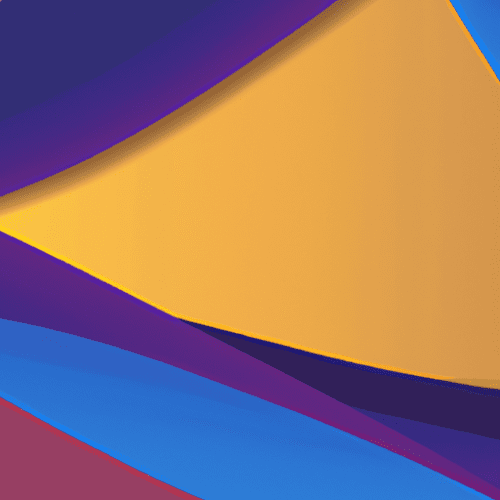
The Language Shift: How Technology Is Transforming the Way We Communicate
Introduction: A New Era of Human Connection
In the age of rapid technological advancement, communication is undergoing a seismic shift. From the eloquent prose of hand-written letters to the split-second responses of instant messages, the way we use language is evolving at a pace never before witnessed in human history. With smartphones in our pockets and AI-driven translation tools at our fingertips, our capacity to interact transcends boundaries of geography, culture, and even language itself. But what exactly is driving this change? How is technology influencing not just what we say, but how we say it? This post explores the profound ways in which technology is reshaping human communication and the implications for language as we know it.
Main Body: Technology’s Impact on Language and Communication
The Rise of Digital Language: Emojis, Acronyms, and Hashtags
One of the most visible effects of technology is the emergence of new forms of digital language. Emojis, GIFs, hashtags, and internet acronyms have become universal tools for expression in the digital age. A simple emoji can now convey a wealth of emotion and meaning that a sentence may struggle to capture. Hashtags transform words into searchable ideas, bridging conversations across continents on social media platforms. Acronyms like “LOL,” “BRB,” or “DM” are not merely shorthand; they represent an entire subculture of communication that thrives on speed and efficiency.
The proliferation of smartphones and social media apps has fostered an environment where brevity and creativity in language become essential. In this landscape, words mutate, adapt, and sometimes are replaced by symbols, signaling a fundamental transformation in how humans convey thoughts and emotions. Linguists are now studying these changes as the digital dialects of a new generation.
Artificial Intelligence: Bridging Language Barriers
Artificial intelligence and machine learning have rapidly become key players in the evolution of language. AI-powered translation services like Google Translate, DeepL, and real-time transcription apps have made cross-lingual communication more accessible than ever before. Travelers and international collaborators now have immediate access to tools that decode languages in an instant, thereby making the world smaller and more interconnected.
Voice assistants and chatbots, powered by natural language processing (NLP), are facilitating conversation between humans and machines in unprecedented ways. From customer service to healthcare advice, these systems are learning the nuances of slang, idioms, and even humor, thereby adapting and expanding the scope of digital communication. As AI continues to evolve, we can expect more personalized and nuanced interactions, blurring the line between human and machine language.
Social Media: A Platform for Linguistic Experimentation
Social media platforms have revolutionized the way we interact with language and with each other. Twitter’s character limit, for example, has forced users to become creative with word choice, syntax, and structure. Memes, with their blend of images and succinct text, have spawned entirely new genres of humor and commentary. Instagram stories and TikTok videos use visual storytelling, often accompanied by clever captions, hashtags, and overlays that extend the boundaries of traditional language.
Furthermore, social media accelerates the global dissemination of linguistic trends. New words, slang, and references spread rapidly, becoming part of mainstream vernacular in a matter of days. In this dynamic environment, language is not static but constantly evolving—a living, breathing entity shaped by a digital collective consciousness.
Remote Communication: Video Calls and the Reinvention of Body Language
The surge in remote work and online education has altered not just our verbal communication, but our nonverbal cues as well. Video conferencing tools such as Zoom, Microsoft Teams, and Google Meet have transformed visual and auditory signals. Tone, facial expressions, and body language are now interpreted through screens, giving rise to new conventions—such as the “virtual nod” or the strategic use of chat reactions and backgrounds.
These shifts demand heightened awareness and adaptability as we strive to maintain clear, empathetic communication in virtual spaces. Meanwhile, the absence of physical presence has encouraged alternative forms of affirmation, like “likes” or “claps,” replacing traditional feedback mechanisms with digital equivalents.
Digital Literacy and Inclusivity: New Challenges and Opportunities
As technology transforms language, it also raises critical questions about accessibility and digital literacy. For some, the new digital dialects may feel exclusionary or overwhelming. Generational gaps in technology use can create communication barriers, as can disparities in access to devices and the internet. However, the increased focus on inclusivity has spurred developers and educators to address these challenges. Automated captions, screen readers, and translation tools are making digital spaces more accessible, enabling broader participation in global conversations.
At the same time, technology empowers voices that might otherwise go unheard. Social media campaigns, viral hashtags, and online advocacy allow individuals and communities to share their stories, organize for change, and connect across divides—reinventing what it means to engage as a global citizen.
Conclusion: Embracing the Future of Communication
The relationship between technology and language is one of constant innovation and adaptation. As we navigate this period of dramatic change, it is important to recognize both the opportunities and challenges it presents. Technology has not only expanded the possibilities of communication but has also introduced new ways of understanding and being understood.
The language shift is far from over. With the advent of virtual and augmented reality, the metaverse, and ever-more sophisticated AI, the lines between spoken, written, and virtual communication will continue to blur. As individuals, professionals, and societies, we must remain flexible, open-minded, and inclusive, embracing the dynamic nature of language while honoring its role as a bridge between cultures and people.
In this digitally connected era, our words, symbols, and gestures traverse vast networks at the speed of thought. By understanding and leveraging technological advancements, we can ensure our communication is not only efficient and creative, but also meaningful and humane.








